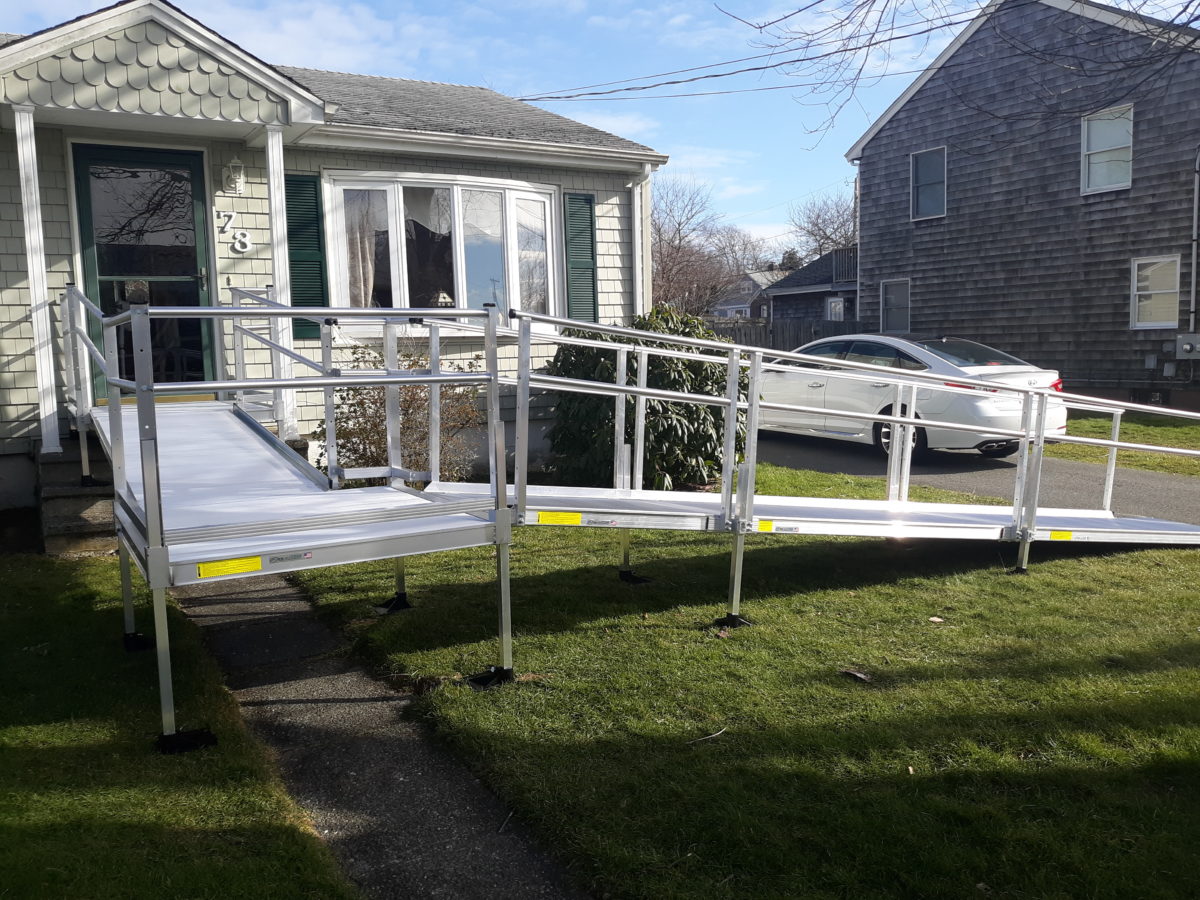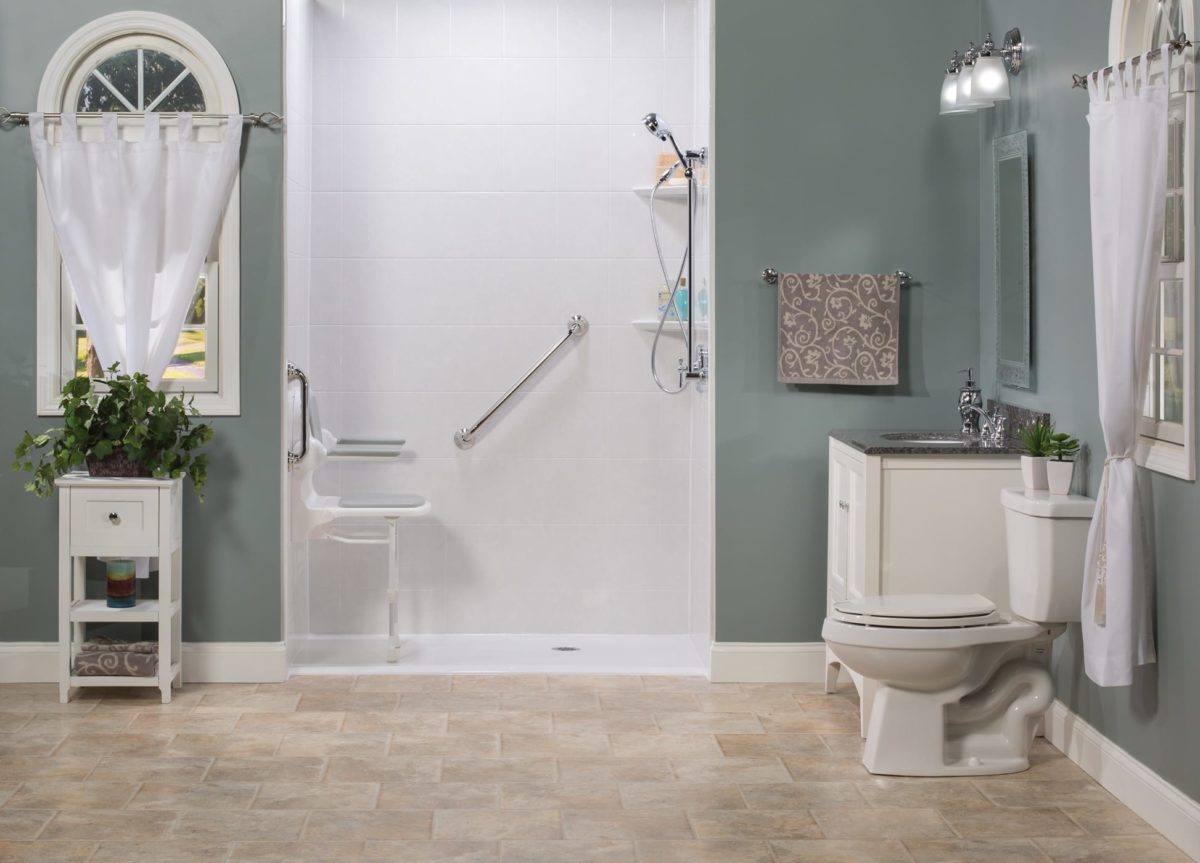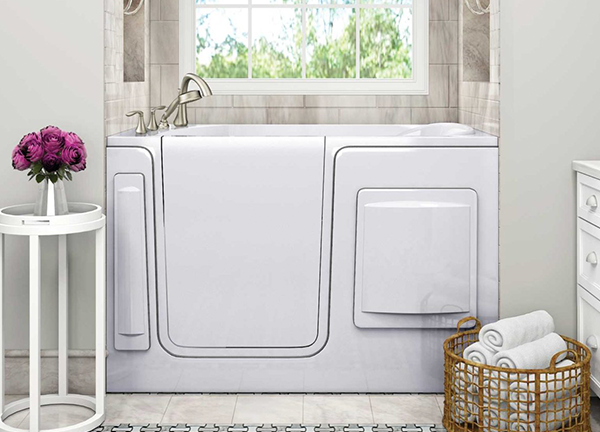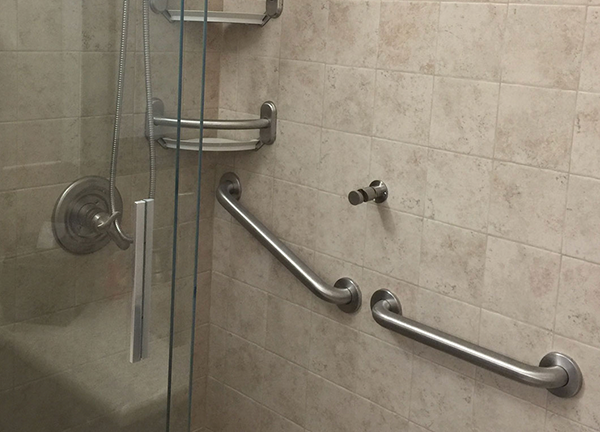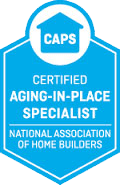In an ideal world, our homes would be safe, comfortable, and accessible for everyone, regardless of age or ability. But for the millions of people with mobility challenges, this is far from the truth. Fortunately, there are several strategies homeowners can adopt to create a more inclusive living environment. From tub-to-shower conversions to installing stairlifts, these changes can significantly improve quality of life.
Understanding Home Mobility Challenges
Aging Population Needs
-
- Many elderly people face difficulty moving around their homes, which can impact their overall quality of life.
- Common issues include navigating stairs, getting in and out of the bathtub, and reaching high shelves. These challenges often necessitate modifications, like installing handrails, stairlifts, or grab bars, to ensure safety and ease of movement.
Challenges for Individuals with Disabilities
-
- Those with disabilities often encounter obstacles like narrow doorways, steps, and insufficient bathroom facilities.
- Ensuring accessibility is not just a matter of convenience but of dignity and independence.
Design Strategies for Inclusive Homes
Tub-to-Shower Conversions
Bathtubs can be challenging for those with limited mobility.
Key Benefits
-
-
- Easier Access: A tub-to-shower conversion removes the high step of traditional bathtubs, making it easier and safer for the elderly and individuals with disabilities. By replacing the tub with a low-threshold or no-threshold shower, users can safely and easily enter and exit the shower area. This seamless design ensures that mobility aids such as wheelchairs and walkers can be used without obstruction.
- No High Step: Traditional bathtubs require users to step over a high edge, which can be particularly hazardous for individuals with balance issues or limited mobility. A tub-to-shower conversion with a low or no-threshold entry minimizes this risk, allowing users to walk or roll directly into the shower area without the need to lift their legs excessively.
- Seating Options: Incorporating built-in shower seats or fold-down benches can offer a place to rest and safely manage personal hygiene tasks. This is particularly beneficial for those who have difficulty standing for extended periods or who may feel unsteady while showering.
-
Wheelchair Ramps
Ramps are essential for wheelchair users but also benefit anyone with mobility issues.
Important Considerations
-
-
- Slope ratio: Ensuring the proper incline for safety and functionality.
- Non-slip surfaces: Using materials that prevent slipping to enhance safety.
-
Key Benefits
-
-
- Increased Accessibility: Wheelchair ramps provide unimpeded entry and exit from homes and other buildings for individuals using wheelchairs, walkers, and other mobility aids. This enhanced accessibility ensures that those with mobility challenges can move freely and independently, reducing the need for assistance from others.
- Enhanced Safety: Unlike steps, ramps offer a smooth, continuous surface that minimizes the risk of trips and falls. This is particularly important in wet or icy conditions where steps can become hazardous. Ramp surfaces can also be treated with non-slip materials to provide additional traction.
- Versatility: Ramps are not limited to just the home’s entrance. They can be used to navigate various height differences within and around the home, such as from the garage to the house or between different levels of a patio. This versatility makes them a practical solution for enhancing mobility throughout all parts of a living space.
- Increased Independence: By allowing individuals to navigate their environments more easily, ramps contribute to a greater sense of independence. Those with mobility issues are empowered to come and go as they please, participate in social activities, and perform daily tasks without reliance on others.
-
Walk-In Bathtubs
Walk-in bathtubs offer safer bathing options. They are designed to provide a safer and more comfortable bathing experience for individuals with mobility challenges. Unlike traditional bathtubs that require stepping over a high edge, walk-in bathtubs feature a low threshold door that opens and closes securely, allowing users to easily enter and exit without lifting their legs excessively.
Key Benefits
-
-
- Enhanced Safety: Walk-in bathtubs significantly reduce the risk of slips and falls that can occur when stepping over the high edge of a traditional bathtub. The entry doors allow users to enter and exit the tub with minimal effort, thereby minimizing potential hazards.
- Hydrotherapy Options: Many walk-in bathtubs are equipped with hydrotherapy features such as water jets and air bubbles. These can provide therapeutic benefits, including muscle relaxation, improved circulation, and pain relief for conditions like arthritis or chronic pain.
- Comfort and Ease of Use: The built-in seating allows users to bathe comfortably without the need to sit on the floor of the tub. The ergonomic design promotes a relaxing bathing experience, reducing stress on the joints and muscles.
- Accessibility: Walk-in bathtubs are designed with accessibility in mind, making them particularly beneficial for elderly individuals and those with limited mobility.
- Independence: By providing a safe and accessible bathing solution, walk-in bathtubs allow individuals to maintain their independence. Users can perform personal hygiene tasks without needing assistance, thereby preserving their dignity and autonomy.
-
Stairlifts
Stairlifts offer a range of benefits that significantly enhance the quality of life for individuals with mobility challenges, particularly in multi-story homes.
Installation Tips
-
-
- Professional installation ensures safety, preventing potential hazards and ensuring compliance with industry standards.
- Regular maintenance keeps systems running efficiently, extending their lifespan and reducing the likelihood of costly repairs.
-
Key Benefits
-
-
- Enhanced Mobility: Stairlifts provide a safe and convenient way for individuals to move between different levels of their homes without the physical exertion and risk associated with climbing stairs. This is particularly beneficial for those with limited mobility, arthritis, or balance issues.
- Increased Independence: By enabling users to navigate stairs independently, stairlifts promote greater autonomy. Users can access all areas of their home without needing assistance from caregivers or family members, which bolsters their confidence and self-reliance.
- Safety: Stairlifts are equipped with various safety features such as seat belts, swivel seats, and footrest sensors, ensuring a secure ride for the user. These features minimize the risk of falls and injuries, providing peace of mind for both the user and their loved ones.
-
Grab Bars
Grab bars are simple yet effective in preventing falls.
Key Benefits
-
-
- Bathroom: Installing grab bars in bathrooms enhances safety by providing support and stability for individuals with limited mobility, reducing slip and fall risks. They boost independence for the elderly and those recovering from surgery, and are a cost-effective safety feature that integrates well with any bathroom design.
- Stairways: Installing grab bars on stairways is essential for home safety, particularly for those with mobility challenges. They provide stable support, reduce fall risks, and enhance independence and security for the elderly, disabled, or those recovering from surgery.
-
Designing for Inclusion: Strategies for Removing Barriers in Your Home
Inclusive home design is not just a trend; it’s a necessity. By removing barriers and creating accessible spaces, you can significantly improve your quality of life. Ready to make your home more inclusive? Contact Home Mobility Pros for personalized solutions tailored to your needs.


